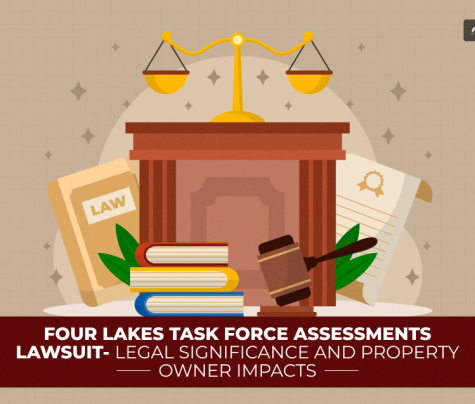
Have you heard about having a revocable living trust? Well, in case you did not know, it is a very important, legally binding document which ensures the safe handling of your finances and properties.
But isn’t it just like an estate plan? Well, yes and no.
Technically, unlike other estate planning options (which are mostly irrevocable, by the way), this document lets you modify the terms of the plan as the grantor. Additionally, it also allows you to revoke the trust entirely if there is any sort of a significant change.
But, what are some of these things that might trigger or lead to the amendment of such a document? And, TBH, most people in Texas are often curious about to what extent you can alter the revocable living trust, the document can be altered.
Hi. In today’s blog, these are some of the things that I will be talking about. So, in case you are curious about what the steps are that you can take to amend the revocable living trust an how it can affect your life, you have come to the right place!
Therefore, keep on reading this blog till the end and thank me later!
Understanding Living Trust Amendment Vs. Restatement
Many people use the living trust amendment and restatement interchangeably. However, it is worth noting that both changes impact the trust’s overall structure differently.
The amendment modifies specific sections or provisions within the trust without altering its structure.
It is suitable when the document needs minor changes, such as adding new assets or updating beneficiaries.
Sometimes, a simple adjustment may not address the rising conflicts. In this case, you may request extensive updates with a complete restatement.
A trust restatement involves rewriting the entire document while keeping the original trust date intact.
The process may take more time than amending the document, and it does not allow transferring assets until all terms are updated.
Restatement may be necessary due to several reasons, including:
- Multiple amendments have made the original trust confusing
- Significant beneficiary, marital, assets, and trustee changes
- State legal updates have made the original document updated.
Reasons to Amend a Living Trust

Life events can necessitate changes to your most vital documents, including a living trust. A revocable living trust offers much-needed flexibility, allowing you to revise its provisions anytime.
However, not all life changes can trigger the amendment. Here’s why you may need to review and alter the trust:
Major Marital Changes
Your marital status can significantly impact your financial planning. If you marry or divorce, your living trust should capture the change to ensure your assets are divided according to your wishes.
The birth of a new child or the death of a beneficiary can also prompt adjustment to ensure the new beneficiaries get equal shares. The changes prevent future asset disputes and ensure your estate is managed as you wish.
Financial and Property Adjustments
Financial changes are constant, even after the death of the grantor. For instance, you may acquire new properties, open more investment accounts, or inherit assets from your parents over time.
You should incorporate these changes into the trust to maintain smooth asset management and avoid probate.
Failing to update your finances can limit trustee powers and distribution conditions or cause beneficiary wars once you become incapacitated.
Modifications To the Successor Trustee
A successor trustee is someone you appoint to manage your assets on behalf of the beneficiaries upon your incapacity or passing.
However, they can also become unsuitable due to health, age, or personal reasons. This may require you or your beneficiaries to appoint a new trustee who aligns with the trust’s requirements.
Changes in successor trustees may also trigger trust amendment, especially if the new trustee holds a significant say in the document’s provisions.
Relocation To Another State
Each state has specific laws that govern the trust’s terms and conditions. What works in Texas may not work in other states.
When moving to or from Texas, it is essential to update the living trust to ensure it complies with local legal requirements.
This prevents future legal complications, particularly in key areas like tax implications, property transfer, and divorce settlements.
Steps To Amend A Living Trust
Modifying a revocable living trust should not be as complicated as most people think. Just like you may want to learn how to create a living trust, amending it requires you to follow four simple steps, as discussed below.
Review The Original Trust Document to Identify the Changes Needed
Before making any changes, review the original trust to identify the clauses that need adjustments.
Some trusts have specific instructions on how to make adjustments and to what extent. Understanding these requirements is vital to avoid future complications.
Read the entire document and make specific sections you wish to make based on the life changes.
For instance, if you are filing for a divorce, you only need to focus on the property distribution sections.
Seek Professional Guidance
It is tempting to modify the document yourself, especially if you want to avoid incurring more costs.
However, seeking professional help is highly recommended to ensure the changes comply with state laws.
A legal professional can also notice minor potential issues that you may overlook. This ensures the new trust captures all the necessary adjustments to prevent the need for frequent revisions.
Draft the Amendment to Include Specific Changes
Once you determine areas that need adjustments, partner with your attorney to draft a trust amendment document.
The document must explicitly outline the sections that need adjustment and ensure they align with the rest of the trust.
It must also have the trust’s original name and date to have a clear connection. Precision in language is also vital to minimize future ambiguity.
Sign and Notarize the Amendment
Most countries require the amendment signing and notarization to make it legally binding. Ensure you and all other parties sign the document in the presence of a notary public to authenticate it.
Parties involved include the grantor, co-grantor, if applicable, successor trustee, and beneficiaries.
Attach it to the original trust after signing it and securely store it. You can also tell any other affected parties about the changes to ensure you are on the same page.
Common Mistakes for Effective Amendment
Changing a living trust may be straightforward. However, it is not immune to mistakes. Some of the mistakes that can impact the effectiveness of the changes include:
- Overlooking the significance of professional help: Modifying the trust without professional help can lead to legal ambiguities and disputes. Involving an experienced estate planning attorney ensures the changes are correctly executed and legally enforceable.
- Not updating other related documents: Sometimes, the effectiveness of the document depends on other estate planning documents. These include a will, power of attorney, and beneficiary financial obligations. Failing to update these documents can cause inconsistencies in asset division and legal conflicts.
- Not following state requirements: Ensuring the amendment adheres to the state laws can be time and money-consuming. However, ignoring the state requirements can lead to complex legal challenges, especially during the property transfer.
- Not documenting the changes: Verbal changes are not legally recognized in any state, including Texas. Be sure to write all changes, sign, and notarize them to be legally valid.
Wrapping It Up!
Reviewing your estate planning is crucial in protecting your properties and ensuring the trust captures life changes. However, following the correct steps is essential for the document to remain legally valid.
Before making any changes, consult your attorney, who will help you make effective adjustments that meet your financial goals.
Read Also:
- Trust Attorney: Why You MUST Hire Them While Estate Planning!
- 6 Features To Look For When Choosing An Estate Planning Software
- Legal Rights and Responsibilities in Shared Rental Situations for Roommates










0 Reply
No comments yet.